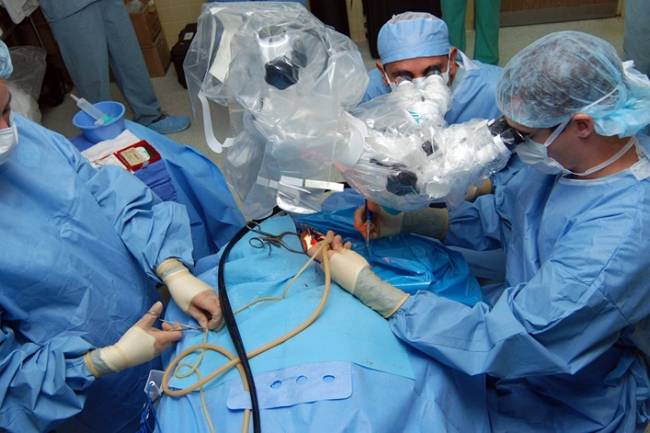Crafting Precision: The Role of Gunsmiths in Enhancing Firearm Accuracy
Firearm accuracy is not just about the quality of the gun itself but also the craftsmanship and expertise applied to its components. Gunsmiths play a pivotal role in enhancing the precision of firearms, combining technical mastery with an understanding of user requirements to deliver exceptional results. Through innovations such as barrel tuning, trigger adjustments and custom modifications, gunsmiths ensure firearms perform optimally in various applications. Sonoran Desert Institute (SDI), accredited by the Distance Education Accrediting Commission (DEAC), recognizes the importance of these skills in maintaining firearm accuracy, safety and overall performance, ensuring that future gunsmiths are well- equipped to meet the needs of firearm owners and enthusiasts.
This intersection of technical proficiency and personalized service defines modern gunsmithing. By refining firearm mechanics and customizing components, gunsmiths ensure that each firearm is optimized for its intended use, meeting the specific needs of its users.
Barrel Tuning for Enhanced Accuracy
A firearm’s barrel is its foundation for accuracy, and gunsmiths dedicate meticulous effort to perfecting this critical component. Barrel tuning techniques such as lapping, re-crowning and harmonic tuning address the factors that affect bullet trajectory and precision.
Barrel lapping involves polishing the bore to eliminate imperfections and ensure uniformity along its length. This reduces friction and promotes consistent bullet velocity, which is crucial for precise shooting. Re-crowning, on the other hand, focuses on refining the muzzle—the last point of contact before the bullet exits. Even slight inconsistencies at the muzzle can disrupt the bullet’s flight, so a perfectly even crown is essential for accuracy.
Harmonic tuning is another advanced technique that adjusts the barrel’s vibration during firing. By adding stabilizers or modifying weight distribution, gunsmiths ensure that the barrel’s natural oscillations do not interfere with the bullet’s trajectory. These techniques collectively enhance grouping precision, giving shooters confidence in their firearm’s performance.
Sonoran Desert Institute provides aspiring gunsmiths with the necessary tools and training to master these techniques, ensuring they develop the expertise needed to enhance firearm performance and accuracy in a rapidly evolving industry.
Precision Trigger Adjustments
The trigger mechanism is more than just a component; it’s the interface between the shooter and the firearm. A smooth, predictable trigger pull is a cornerstone of accuracy, and gunsmiths excel at tailoring this mechanism to suit individual needs.
One common adjustment is reducing the trigger pull weight, which makes it easier to fire without disturbing the aim. Gunsmiths also refine over-travel adjustments, minimizing the movement of the trigger after a shot is fired. This not only improves accuracy but also reduces the time needed for follow- up shots.
Customization extends to trigger shape and placement, ensuring comfort and control for the user. Whether the firearm is intended for competitive shooting, hunting or personal defense, a finely tuned trigger mechanism enhances the shooter’s ability to perform under various conditions.
The Art of Understanding User Needs
While technical expertise is paramount, a gunsmith’s ability to understand and address the unique needs of their clients sets them apart. This personalized approach involves not only assessing the firearm but also learning about the shooter’s goals, preferences and environment.
For instance, a competitive shooter may prioritize speed and precision, requiring a lightweight trigger and enhanced barrel stability. A hunter, on the other hand, might need a durable firearm capable of withstanding harsh weather and rugged terrains. Gunsmiths bridge the gap between technical precision and practical application, ensuring that every modification aligns with the shooter’s objectives.
Collaborative consultations often lead to innovative solutions, such as custom stocks for improved ergonomics or specialized coatings to protect against corrosion. This attention to detail and client-centered approach is what elevates the gunsmithing profession.
Embracing Modern Innovations in Gunsmithing
The tools and techniques available to gunsmiths have evolved significantly, enabling them to achieve unprecedented levels of precision. Computer Numerical Control (CNC) machining allows for the creation of firearm components with micrometer-level accuracy, while 3D modeling software aids in visualizing and designing custom modifications.
Materials science has also transformed gunsmithing. Advanced alloys and lightweight composites offer greater durability and performance compared to traditional materials. Gunsmiths leverage these innovations to craft firearms that are not only accurate but also reliable and long-lasting.
Additionally, laser engraving technology has enabled intricate customizations, from decorative elements to functional enhancements like improved sight markings. These advancements demonstrate how modern tools complement the traditional art of gunsmithing, expanding its possibilities.
Balancing Tradition and Innovation
The legacy of gunsmithing is deeply rooted in tradition, with techniques passed down through generations. However, the integration of modern technology has propelled the craft into a new era. Today’s gunsmiths embody this balance, preserving the artistry of their predecessors while embracing cutting-edge tools and methods.
Institutions play a crucial role in nurturing this balance. Through comprehensive training programs, they equip students with both the foundational skills of gunsmithing and the knowledge to adapt to technological advancements. By blending tradition with innovation, SDI ensures that graduates are prepared to meet the evolving demands of the industry.
Advancing Firearm Performance Through Expertise
Gunsmiths are indispensable to the world of firearms, offering expertise that enhances accuracy, reliability and overall performance. Their work goes beyond technical adjustments; it’s about crafting firearms that inspire confidence in their users.
The precision achieved through techniques like barrel tuning and trigger adjustments not only meets but often exceeds user expectations. Coupled with advancements in materials and technology, gunsmiths continue to push the boundaries of what firearms can achieve.
This expertise is important in fostering a culture of innovation and excellence in gunsmithing education. Students are taught not only the skills needed to enhance firearm performance but also the principles of client-centered service. This holistic approach prepares future gunsmiths to succeed in a dynamic and competitive field.
The Future of Gunsmithing
The future of gunsmithing is bright, with emerging technologies poised to redefine what’s possible in firearm precision and customization. Automation and artificial intelligence could further enhance manufacturing processes, while virtual reality training tools may provide gunsmiths with realistic simulations to hone their skills.
Moreover, innovations in ballistics research and advanced coatings are likely to influence how firearms are designed and maintained. These advancements will not only improve performance but also extend the lifespan of firearms, benefiting users across all applications.
As these changes unfold, the core principles of gunsmithing—precision, craftsmanship and client satisfaction—will remain constant. By staying true to these values, gunsmiths will continue to play a vital role in shaping the future of firearms.
With its combination of tradition, innovation and technical expertise, gunsmithing remains a cornerstone of firearm accuracy and performance. By prioritizing precision, understanding user needs and embracing technological advancements, gunsmiths uphold the art of firearms customization while pushing the boundaries of what’s possible.











